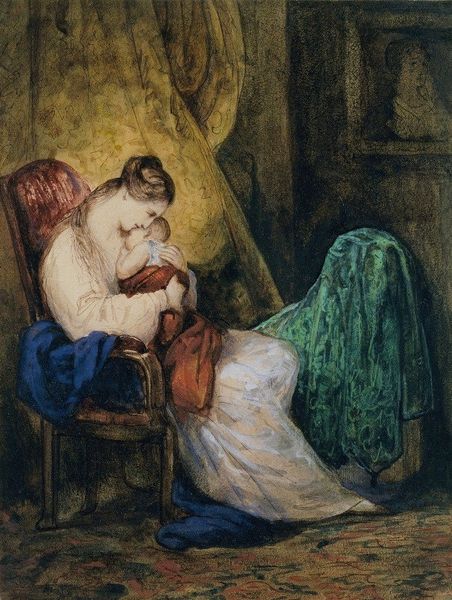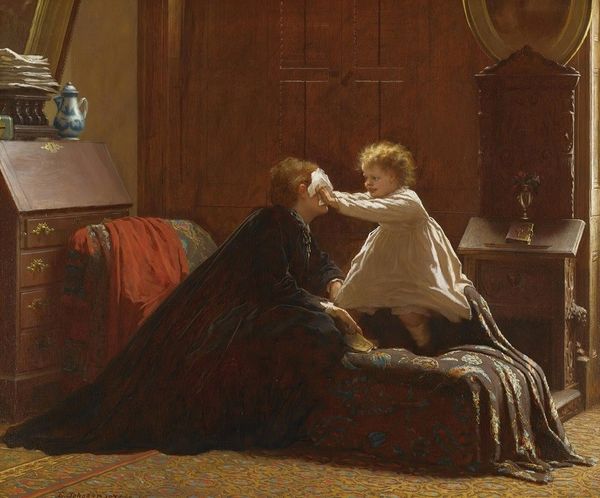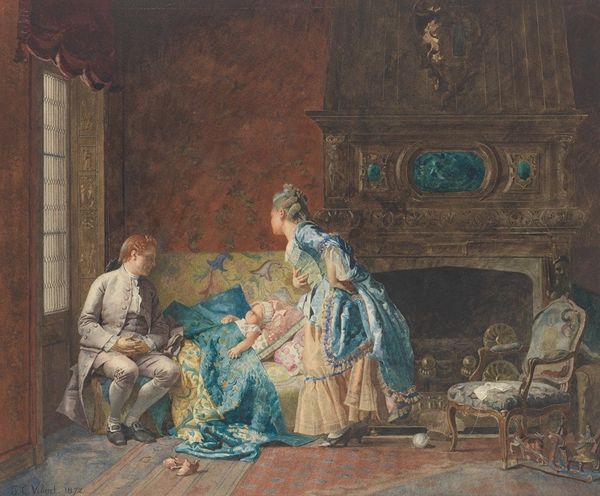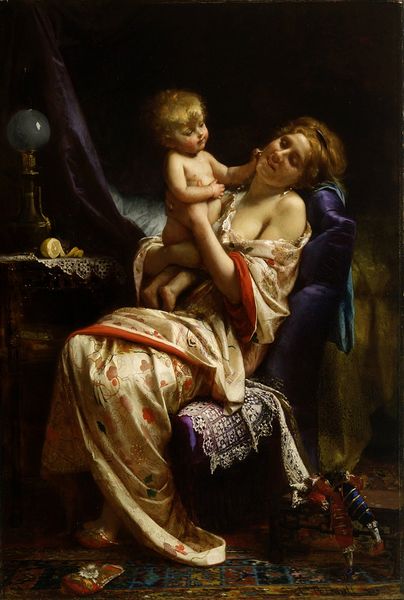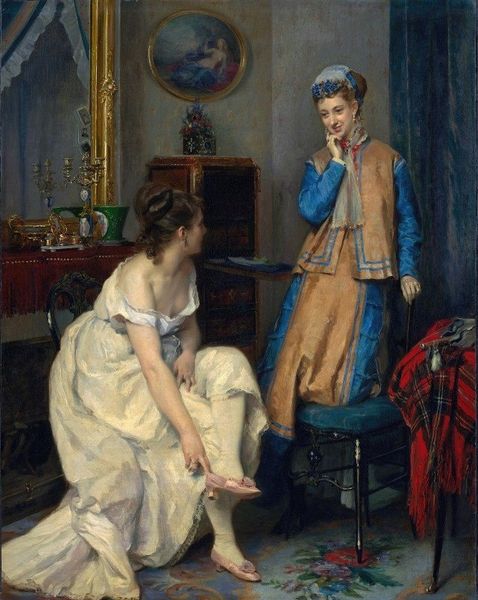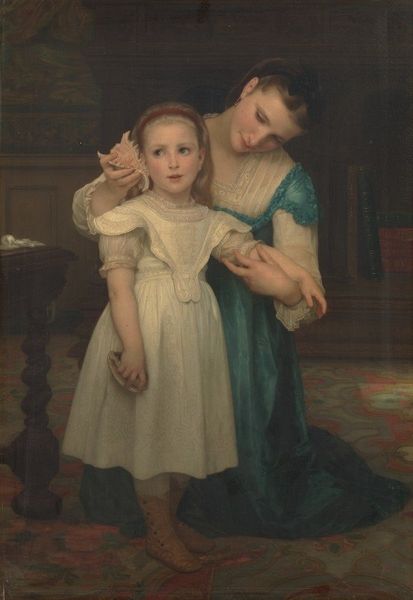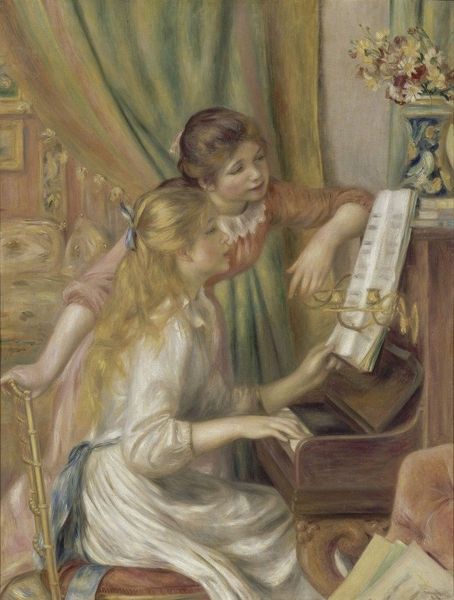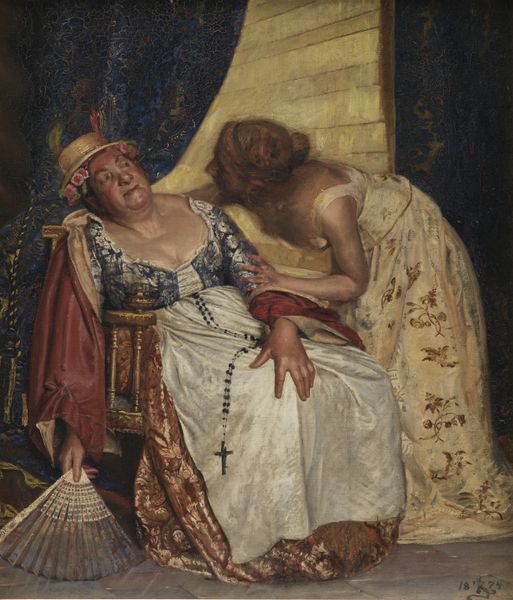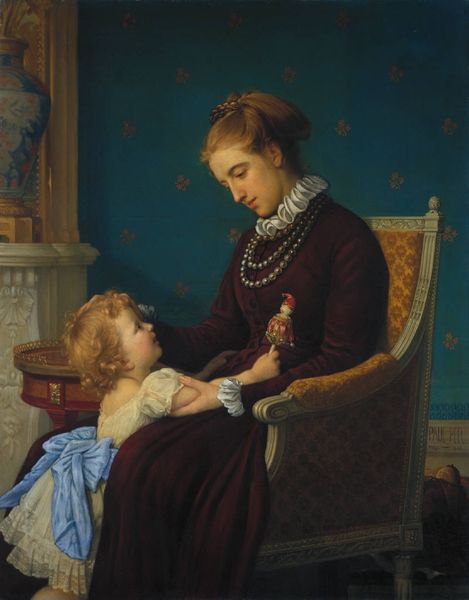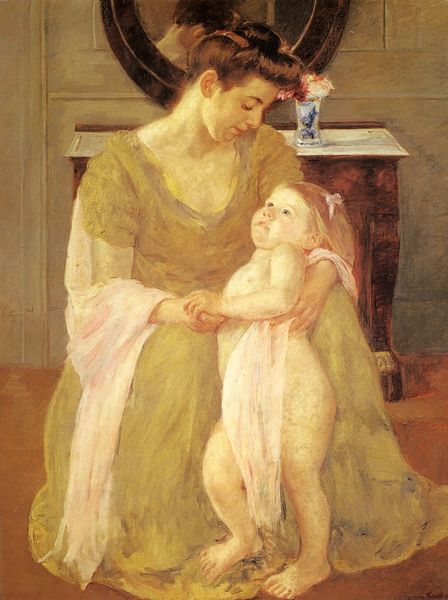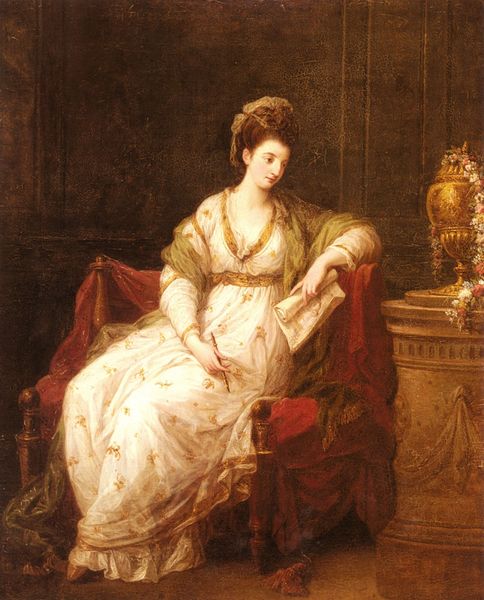
#
figurative
#
acrylic
#
charcoal drawing
#
possibly oil pastel
#
oil painting
#
acrylic on canvas
#
underpainting
#
painting painterly
#
portrait art
#
fine art portrait
#
digital portrait
Copyright: Public Domain: Artvee
Editor: So this is Albert Edelfelt's "Queen Bianca" from 1877. There’s a beautiful woman in what looks like medieval dress holding a child, in a dark and enclosed, historical setting. The way the light catches the white dress is striking. What's your initial impression? Curator: My initial impression always starts with, "why this subject at this moment?" This intimate scene evokes a sense of idealized domesticity. However, considering it was painted in 1877, a period of burgeoning nationalism and industrial change, what might Edelfelt be subtly suggesting about Finnish identity, given his focus on historical subjects? Is this simply a genre painting, or is he trying to connect ideas of noble domesticity to broader ideas about Finnish society? Editor: That’s fascinating; I hadn’t considered a connection to Finnish nationalism. So, is the ‘Queen’ title ironic in that this queen is engaged in such an ordinary, domestic act, countering the powerful role that might come with such a position? Curator: Exactly! Titles matter. “Queen Bianca” frames how we perceive the scene. He's playing with visual tropes here, too. Think about how artists at the time were portraying women. Were they symbols of national identity? Of idealized motherhood? Are those ideas here connected, perhaps subversively? What happens when he presents royalty, with that loaded cultural history, within such an intimate scene of childhood embrace? Editor: So, he's not just showing a tender moment but is also making us question how we define power and its representation? Curator: Precisely. Look at the child reaching towards her. What statement is Edelfelt making about the future? He seems interested in how concepts of identity, nationhood, and tradition could play into Finnish national identity in a changing world. It really makes you question the image’s apparent simplicity, doesn't it? Editor: Definitely! I never would have picked up on those socio-political currents without thinking about the historical context. Thanks for opening my eyes to that. Curator: It is this constant contextualization that brings meaning and insight. It’s exciting to bring all of this together and start the analysis!
Comments
No comments
Be the first to comment and join the conversation on the ultimate creative platform.
